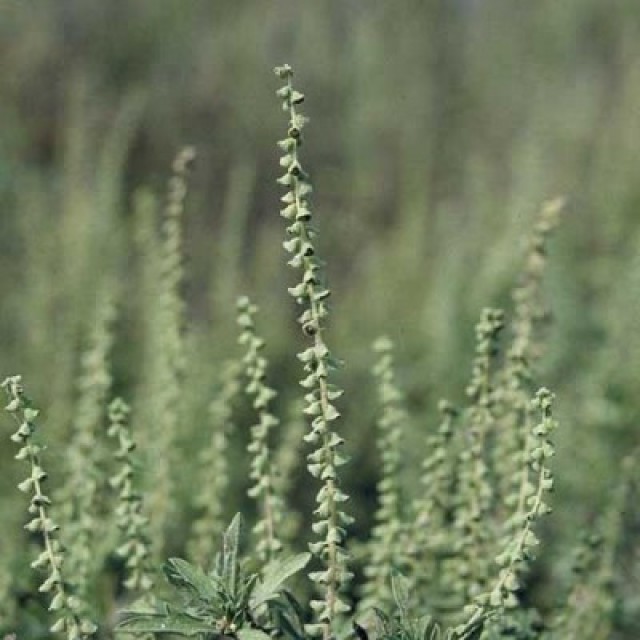COMMON NAME
Western ragweed
SCIENTIFIC NAME
Ambrosia psilostachya
ALSO KNOWN AS
Cuman ragweed, Perennial ragweed
Plant family
Aster (Asteraceae)
Plant group
Wildflowers and Herbs
Western ragweed is a common perennial herbaceous plant with separate male and female flowers, native to all of North America.
35 reports
12+
OBSERVERS
35+
OBSERVATIONS
Identification hints
This common weedy plant has hairy leaves that look kind of thick and fern-like and small flowers arranged in spikes. Western ragweed looks very similar to Common ragweed (Ambrosia artemisiifolia) but has fewer branches, thicker leaf lobes and creeping rhizomes (common ragweed has a taproot).
Did you know?
The pollen from western ragweed is the bane of many who suffer from allergies. It was used medicinally, in teas for various purposes by several Native American tribes. The Kiowa used this plant rolled with different sages in sweathouses. Rodents eat the seeds and some herbivores eat the bitter foliage to a limited extent. Because the caterpillars of various moths feed on its foliage, and many songbirds and upland game birds eat its seeds throughout the winter, this plant has high ecological value. Western ragweed generally increases with grazing and disturbance, since it does not tolerate shade.
DISTRIBUTION IN TH U.S.
Alabama
,
Arkansas
,
American Samoa
,
Arizona
,
California
,
Colorado
,
Connecticut
,
District of Columbia
,
Delaware
,
Florida
,
Georgia
,
Iowa
,
Idaho
,
Illinois
,
Indiana
,
Kansas
,
Louisiana
,
Massachusetts
,
Maine
,
Michigan
,
Minnesota
,
Missouri
,
Mississippi
,
Montana
,
North Carolina
,
North Dakota
,
Nebraska
,
New Hampshire
,
New Jersey
,
New Mexico
,
Nevada
,
New York
,
Ohio
,
Oklahoma
,
Oregon
,
Pennsylvania
,
South Carolina
,
South Dakota
,
Tennessee
,
Texas
,
Utah
,
Vermont
,
Washington
,
Wisconsin
,
Wyoming
HABITAT
Western ragweed is found in open habitats including grasslands, savannas, woodlands, and riparian areas. It is found on very dry, sandy soils, and unproductive sites. It also can occur in disturbed and waste areas, travel corridors, dry fields and rangeland throughout the US. It is most common in the Great Plains and the Great Basin.
ATTRIBUTES
Leaves
The lower leaves are up to 5 inches long and 2 inches wide deeply cut into narrow, pinnate lobes that are again lobed or toothed. Leaf attachment is opposite at the base of the plant and becomes alternate higher up the stem. The leaf surfaces are hairy.
Flowers
The male flower heads are found above the single female flowers. The male flowers have about 5 to 30 tiny yellow florets that form heads about one eighth of an inch across. The female flowers are greenish white and have just one floret per flower head.
Fruits
The fruit of western ragweed is a tiny, bur-like achene (hard, three-sided nutlet).
Bloom Time
Flowering generally occurs from July to October but can continue until December. The fruit falls at maturity, usually late fall and winter (October to December).
See Menu
- 2021 Chicago Botanic Garden. All Rights Reserved.
-
Creative Commons
BY-NC-SA 4.0 - Terms of Use
- Privacy Policy
- Data Sharing and Citation Policies
- 2021 Chicago Botanic Garden. All Rights Reserved.



